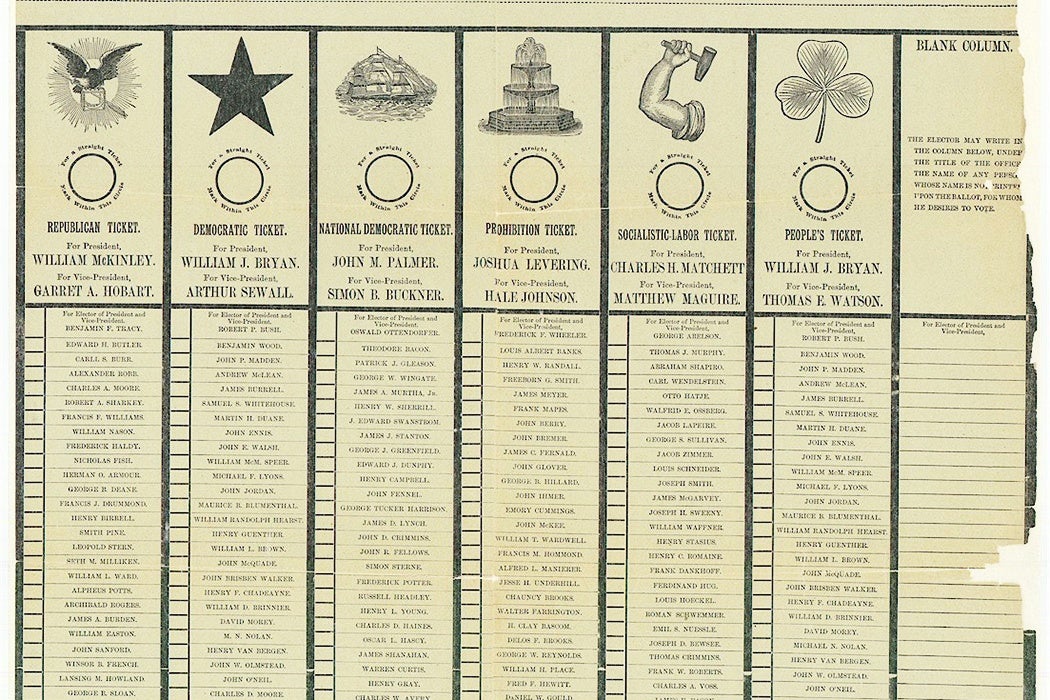Did you know that ballot position can have an effect on voting? In many cases, the first-listed candidate is more likely to be voted for. The relationship between ballot position and electoral success, AKA “name-order effects,” has been well-established in the political science literature, and seems to be a truism amongst politicians, who covet those first-row listings. In the dark ages of American politics, candidates were not beneath changing their names when listings were alphabetical, but in our enlightened times they are more likely to sue over name order.
Delbert A. Taebel showed that not only did candidates listed first enjoy a favorable advantage, but that this advantage was greater in contests further down the ballot. This advantage did not, however, hold when voters had high recognition of candidate names. This suggests that presidential elections, where there is generally much higher name recognition than in primary and off-year elections, are less likely to be influenced by name-order effects. The flip side of this was that in this study, low name recognition meant that voters were less likely to make any choice at all for those unknown candidates.
As Taebel notes, it’s difficult to use an actual election for such studies. His study was a survey using the “Massachusetts” type ballot, in which candidates are listed in a single column, not in party columns (which complicates things, since some voters vote by party instead of by name) with historical political figures like Washington, Kennedy, etc.
More recently, Jonathan G. Koppell and Jennifer A. Steen went with an actual election in which the names were rotated on the ballots by precincts, the practice in the case study jurisdiction. In 71 of 79 New York City Democratic Primary contests, candidates received a greater proportion of votes when they were listed first compared to any other position they were listed in. For 7 of the 71 contests where this was the case, the advantage of first position exceeded the winner’s margin, “suggesting that the ballot position would have determined the election’s outcomes if one candidate had held the top spot in all precincts.”
So how do election boards deal with this choice bias? In some states, ballot position is determined by drawing lots or by the order of the candidate’s formal filing for office. In a minority of states, as in this study, they rotate candidate names, which for Koppell and Steen is the best strategy for paper ballots. The authors note that electronic ballots could easily rotate names for each voter…”and provide terrific data for political scientists.”







